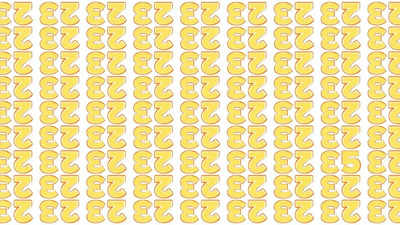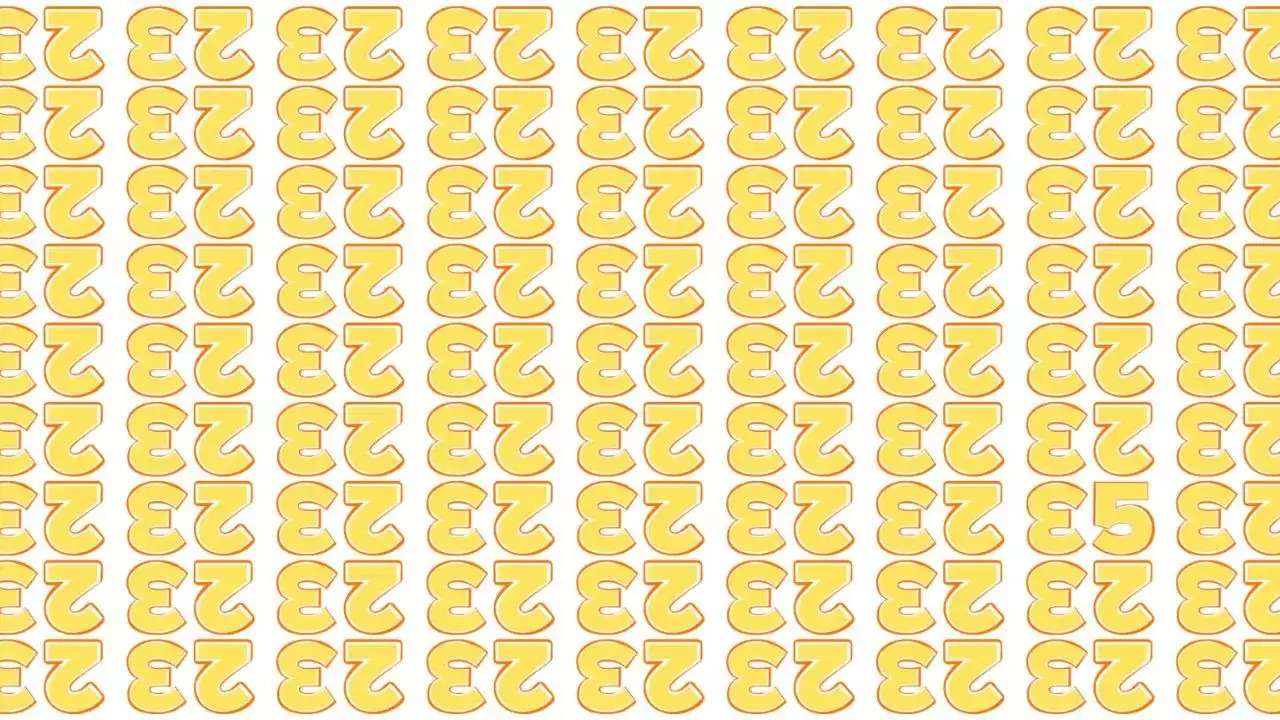Optical illusion: Only those with sharp vision can spot the odd 5 hidden among a sea of identical "2s" and "3s"
etimes.in | Feb 3, 2025, 02.00 AM IST

Are you ready for a fun, challenging test of your observational skills? Well, today's optical illusion presents the exciting puzzle that will put your focus and attention to detail to the ultimate test. In this astonishing puzzle, one "5" has been concealed in a seemingly endless ocean of seemingly identical "2s" and "3s." While at first, the entire picture appears uniform, closer inspection will reveal that not all characters are the same. Your task is to spot the odd "5" in this tricky configuration
Rows of yellow and orange "2s" and "3s" were carefully placed to create a false pattern. The result is a smart design that the human eye would deceive itself into thinking uniform, thus the harder it gets to find the odd character. It takes a few seconds for most people to locate the missing number, and for some, over a minute. Others give up. Others, though, have an adrenaline rush and an overwhelming sense of accomplishment when they think they see the elusive "5".
But why is this ostensibly simple puzzle so difficult? The reason is that our brains process visual information differently.
Optical illusions occur as a brain response to visual data that means one thing but cues our brain to respond as something else. Our visual system is wired to detect patterns and bunch similar things together. It's called "perceptual grouping." The uniformity in terms of shape, color, and size of characters is so evident that it establishes a mental short cut and the anomaly becomes really hard to capture. That is why, despite the "5" being directly in front of you, initially your brain just fails to observe it.
This optical illusion is not only something on which to play around and derive fun; it is an interesting indication of facts about human cognition. It shows the fine balance between speed and accuracy in visual processing, demonstrating how our brains sometimes sacrifice absolute precision for efficiency. These illusions remind us that even the simplest tasks can be a challenge to our perception and problem-solving skills.
So, did you find the hidden "5"? If not, don't worry—you can practice more! Engaging with optical illusions regularly can help sharpen concentration, enhance attention to detail, and teach one's brain to identify subtle differences more effectively. Whether you solve it in record time or take a bit longer, the important thing is that you can have fun while sharpening your observational skills.

Rows of yellow and orange "2s" and "3s" were carefully placed to create a false pattern. The result is a smart design that the human eye would deceive itself into thinking uniform, thus the harder it gets to find the odd character. It takes a few seconds for most people to locate the missing number, and for some, over a minute. Others give up. Others, though, have an adrenaline rush and an overwhelming sense of accomplishment when they think they see the elusive "5".
But why is this ostensibly simple puzzle so difficult? The reason is that our brains process visual information differently.
Optical illusions occur as a brain response to visual data that means one thing but cues our brain to respond as something else. Our visual system is wired to detect patterns and bunch similar things together. It's called "perceptual grouping." The uniformity in terms of shape, color, and size of characters is so evident that it establishes a mental short cut and the anomaly becomes really hard to capture. That is why, despite the "5" being directly in front of you, initially your brain just fails to observe it.
This optical illusion is not only something on which to play around and derive fun; it is an interesting indication of facts about human cognition. It shows the fine balance between speed and accuracy in visual processing, demonstrating how our brains sometimes sacrifice absolute precision for efficiency. These illusions remind us that even the simplest tasks can be a challenge to our perception and problem-solving skills.
So, did you find the hidden "5"? If not, don't worry—you can practice more! Engaging with optical illusions regularly can help sharpen concentration, enhance attention to detail, and teach one's brain to identify subtle differences more effectively. Whether you solve it in record time or take a bit longer, the important thing is that you can have fun while sharpening your observational skills.
